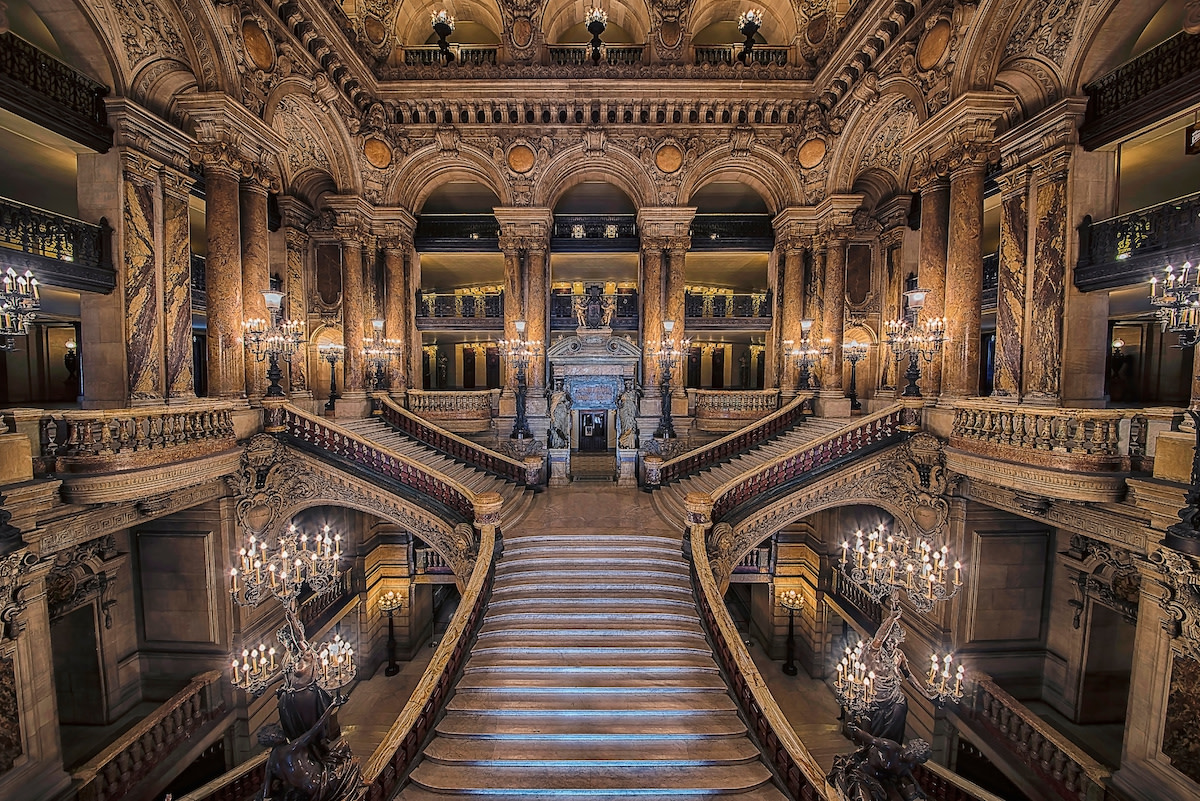Beaux Arts Architecture: 7 Buildings in the Beaux Arts Style
Written by MasterClass
Last updated: Apr 26, 2022 • 4 min read
Beaux-Arts architecture drew as much from the basic symmetry of Rome’s ancient buildings as it did from the ornate grandiosity of the Gothic and Renaissance periods. Learn more about this neoclassical style, which left its mark in both Europe and the United States in the late nineteenth and early twentieth centuries.
Learn From the Best
What Is Beaux-Arts Architecture?
Beaux-Arts architecture is a grandiose, ornamental, and symmetrical style of design popular throughout the Gilded Age of the late nineteenth and early twentieth century. It took its name from the École des Beaux-Arts (or “School of Fine Arts”) in France.
Beaux-Arts architects drew heavily from the Italian Renaissance and Baroque periods, as well as the classical Greek and Roman designs that inspired those movements in the first place. Beaux-Arts structures commonly served as public buildings (such as train stations, university campuses, and courthouses) rather than private residences due to their grandiosity and costliness.
Although initially a European phenomenon, Beaux-Arts architecture became far more popular throughout North America, specifically in the United States. To this day, the phrases “Beaux-Arts” and “American Renaissance” are interchangeable when referring to this style of architecture.
A Brief History of Beaux-Arts Architecture
Beaux-Arts architecture evolved out of French architects revisiting the Louis XIV style of the seventeenth century—as well as the Baroque, Gothic, Renaissance, and Classical movements, which served as that style’s precursors. In the late nineteenth century, it became the style of choice in curricula at the École des Beaux-Arts in France.
After Richard Morris Hunt, the first architect from the United States to attend the French school, returned home, he played a large role in the Beaux-Arts style’s stateside popularity. Other prominent architects—including Daniel Burnham, Henry Hobson Richardson, and Charles McKim—began to design buildings in the style. As the movement spread from New York City to San Francisco, it came to epitomize the wealth and opulence of the Gilded Age. This is one reason why the grandiose style fell out of favor during the economic calamity of the Great Depression.
Characteristics of the Beaux-Arts Style
In both Europe and the United States, Beaux-Arts architects followed similar patterns in their designs. Consider these three core characteristics of the Beaux-Arts architectural style:
- Emphasis on symmetry: Beaux-Arts architecture retained a respect for symmetrical and traditional design. Most buildings also contained a raised first story to accentuate the grandeur and balance of the architecture’s symmetry as people first entered the premises.
- Grandiose design: Beaux-Arts architects had a flair for the grandiose. Blueprints included balustrades, cartouches, cornices, pediments, and pilasters, which harkened back to classical Greek and Roman architecture while also expanding on the styles of those ancient societies.
- Pronounced ornamentation: Both the insides and outsides of Beaux-Arts buildings featured murals, statuaries, and other types of ornamentation. These structures were meant to convey a sense of opulence and abundance—and these additional decorations certainly drove the point home.
7 Examples of Beaux-Arts Architecture
Examples of Beaux-Arts architecture still stand all around the United States and Europe. Here are seven you can still go see:
- 1. The Breakers: Originally the home of industrialist Cornelius Vanderbilt II, the Breakers is proof even some private citizens could afford a Beaux-Arts manor during the Gilded Age. Located in Newport, Rhode Island, this mansion now serves as a museum.
- 2. Carnegie Hall: This Beaux-Arts building still serves as one of the United States’ most famous concert halls. Nineteenth-century steel baron and philanthropist Andrew Carnegie erected the building in midtown Manhattan.
- 3. Grand Central Terminal: Opened in 1913, this New York City train station still operates today for the many commuters shuffling in and out of the East Coast metropolitan center. Grand Central Terminal is a testament to the power of both form and function in architecture.
- 4. New York Public Library: From 1895 to today, the main branch of the New York Public Library houses millions of books inside a Beaux-Arts structure. It’s second only to the Library of Congress in terms of its size.
- 5. Palais Garnier: Even though Beaux-Arts architecture caught on more in the United States than in its native Europe, the Palais Garnier is a sign the classical architecture revival made its mark in its home continent, too. Designed by French architect Charles Garnier, this Paris opera house boasts a famed staircase and auditorium.
- 6. Thomas Jefferson Building: As a sign of the Beaux-Arts movement’s influence on United States architecture, look no further than the Thomas Jefferson Building in Washington, DC. It serves as the centerpiece of the Library of Congress and a long-lasting testament to the École des Beaux-Arts’ long shadow across the Atlantic.
- 7. World’s Columbian Exposition: You can visit many still-standing buildings from the famous Chicago World’s Fair. Architect Daniel Burnham blueprinted this “White City,” which was the talk of the globe when it premiered.
Learn More
Get the MasterClass Annual Membership for exclusive access to video lessons taught by the world’s best, including Frank Gehry, Will Wright, Annie Leibovitz, Kelly Wearstler, Ron Finley, and more.
